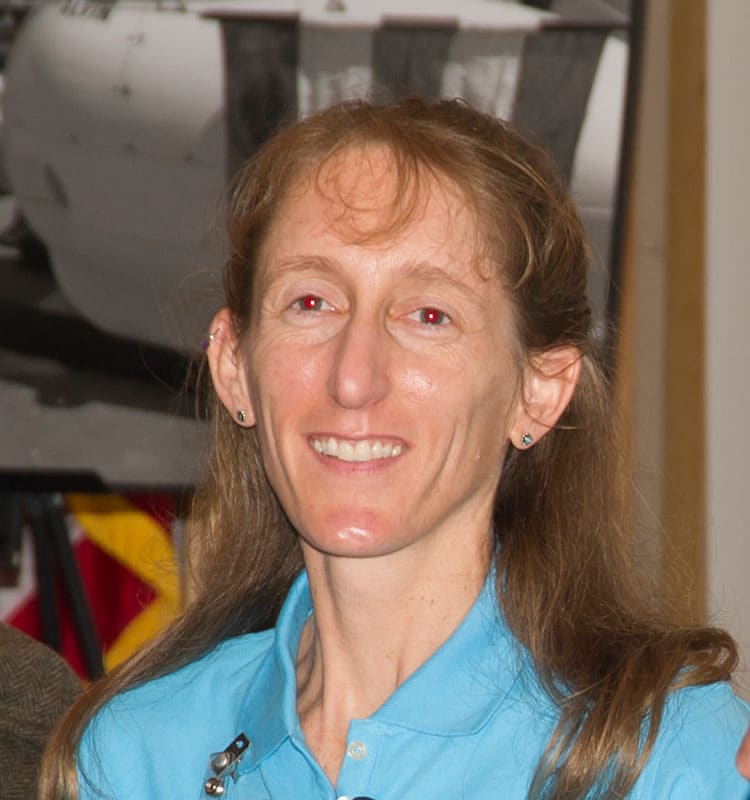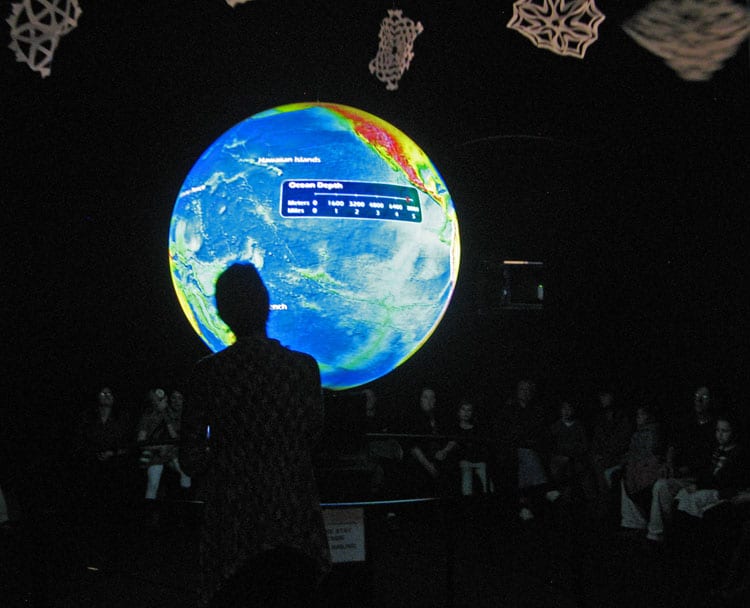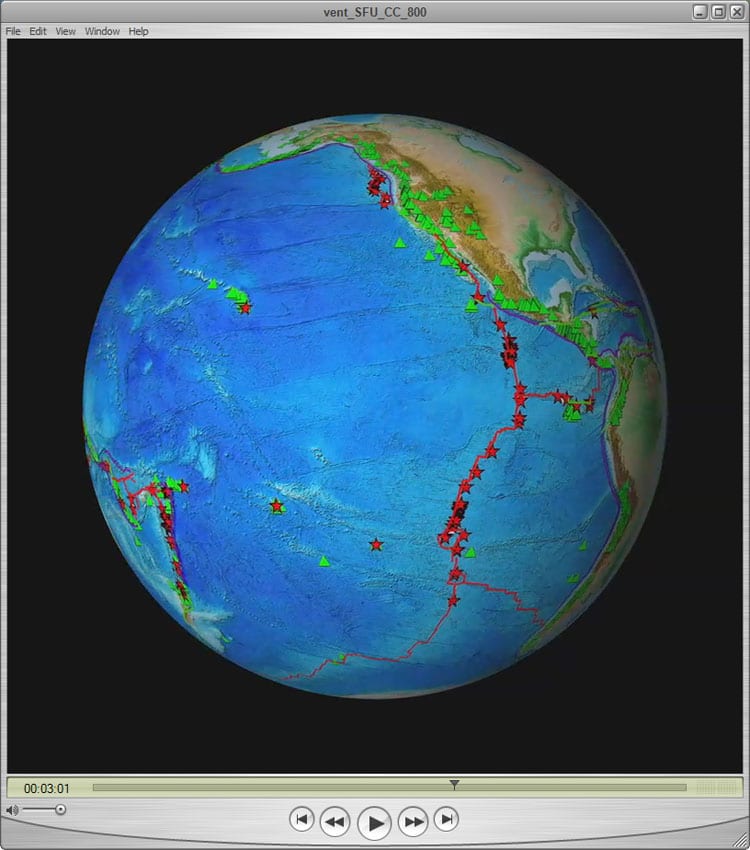New Museum Exhibit Explores Deep Ocean Environment
December 15, 2014
The Woods Hole Oceanographic Institution (WHOI) in collaboration with the Ocean Explorium in New Bedford, Mass., has created new digital content for museum-based spherical display systems that brings high-definition images and video of dynamic, deep ocean ecosystems to the public.
The “Global Viewport for Virtual Exploration of Deep-Sea Hydrothermal Vents” is an interactive educational program that connects the public with these remote yet vital ecosystems using the Science On a Sphere® (SOS) digital globe that projects the global datasets and imagery onto a room-sized globe. SOS systems are installed at more than 100 science museums in 20 countries around the world, and provide museum visitors with a large-scale view of global environmental phenomenon. SOS was developed by researchers at the National Oceanic and Atmospheric Administration (NOAA). Utilizing computers and multiple video projectors, the audience can see animated images that explain complex environmental processes in an intuitive and captivating way.
“The amazing footage in this new digital program will help the public see how these deep ocean ecosystems have an impact on the planet, and on them,” said Stace Beaulieu, a WHOI research specialist and the principal investigator for the project funded by the National Science Foundation.
Striking images from the deep sea in National Geographic magazine inspired Beaulieu as a young child to become a deep-sea biologist. That experience made her believe in the power of informal science education to inspire the next generation of explorers and oceanographers.
For this project, Beaulieu collaborated with musem educators at the Ocean Explorium to develop two movies for the spherical display system: “Life Without Sunlight” and “Smoke and Fire Underwater.” The movies are intended engage the public and also to help teachers and other educators to advance their students’s understanding of Earth science and ocean literacy principles. The films focus on hydrothermal vents, which are like underwater hot springs located mainly along Earth’s plate boundaries at depths as deep as 5000 meters (3 miles) below the ocean surface. These vents spew iron and sulfur-rich minerals and super-heated water up to 760 degrees Fahrenheit.
Deep-sea hydrothermal vents were first discovered in 1977, and since then about 200 have been observed. Over the last four years, Beaulieu developed an open-access database of hydrothermal vents around the world called the InterRidge Global Database of Active Submarine Hydrothermal Vent Fields, which is used by the scientific community.
“Hydrothermal vents are the expression of this larger circulation of water that goes between the ocean and the Earth. The vents are basically outputting chemicals from inside the Earth and creating a chemical balance for our oceans,” she said. “They provide Earth with diverse life forms that aren’t found anywhere else.”
To test the effectiveness of the Global Viewport program in educating and inspiring students and museum-goers, the project team hosted two family science nights and a teacher workshop at the Ocean Explorium, with participants providing measurable feedback following their experience with the exhibit. Response was overwhelmingly positive – success Beaulieu attributes to the tight collaboration between scientists, educators, and graphic artists in developing the content for public audiences. Results for the formal evaluation will be revealed at the America Geophysical Union’s Fall Meeting in San Francisco, on December 18, 2014.
“Not many people get the chance to experience what it’s like to dive in a submersible to the seafloor,” said Beaulieu, who has had 13 dives in the Alvin submersible. “But I can tell you, the way this spherical display system projects imagery on the globe right in front of you, it is actually like looking through the viewport of Alvin. I think it’s an effective way to excite the public about the deep ocean environment.”
The “Global Viewport for Virtual Exploration of Deep-Sea Hydrothermal Vents” is now available through the Woods Hole Open Access Server and NOAA’s Science On a Sphere® program.
The National Science Foundation’s Directorate of Geosciences (GEO) supported this project.
The Woods Hole Oceanographic Institution is a private, non-profit organization on Cape Cod, Mass., dedicated to marine research, engineering, and higher education. Established in 1930 on a recommendation from the National Academy of Sciences, its primary mission is to understand the ocean and its interaction with the Earth as a whole, and to communicate a basic understanding of the ocean’s role in the changing global environment. For more information, please visit www.whoi.edu.



